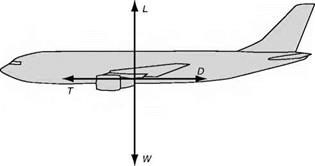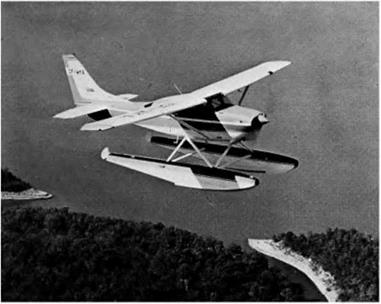The tail plane and other horizontal control surfaces
The traditional method of ensuring that the aircraft can be trimmed to give no resultant moment is to provide the aircraft with an auxiliary lifting surface
|
|
Fig 5.1 Forces acting through a single point. This arrangement is not generally practical, as the line of action of the lift tends to move around with the angle of attack
|
|
Fig 5.2 Moment due to lift and weight balanced by moment due to drag and thrust
|
|
Fig 5B Floatplane
(By courtesy of Cessna Aircraft Company, USA)
called a tail plane. The lift of the tail plane can be regulated by the pilot, and thus he can adjust the moment that it applies. Fig. 5.3 (overleaf) shows how this works. The tail plane can produce lift in either the positive (upward) or negative (downward sense) in order to produce the required moment for trim. To change the tail plane lift, either the whole surface can be pivoted, or the rear part of the surface (the elevator) can be hinged up or down. In practice, for small adjustments to the trim, it is common practice to provide a very small hinged surface or ‘trim tab’ in addition to the main elevator, as described later.
Nowadays, there are many types of horizontal control surface, and sometimes even the engine exhaust direction can be altered to provide a trim control.














